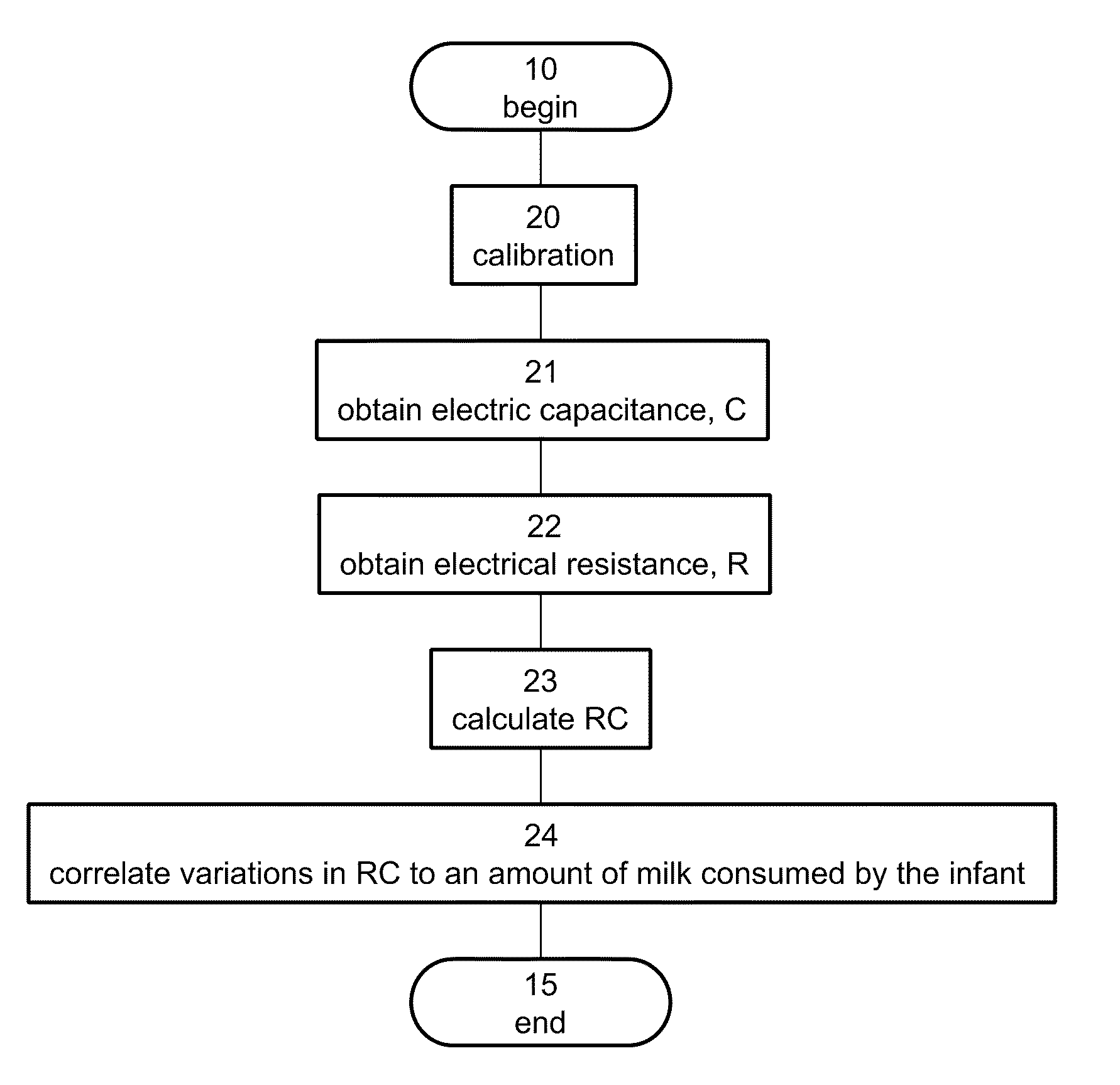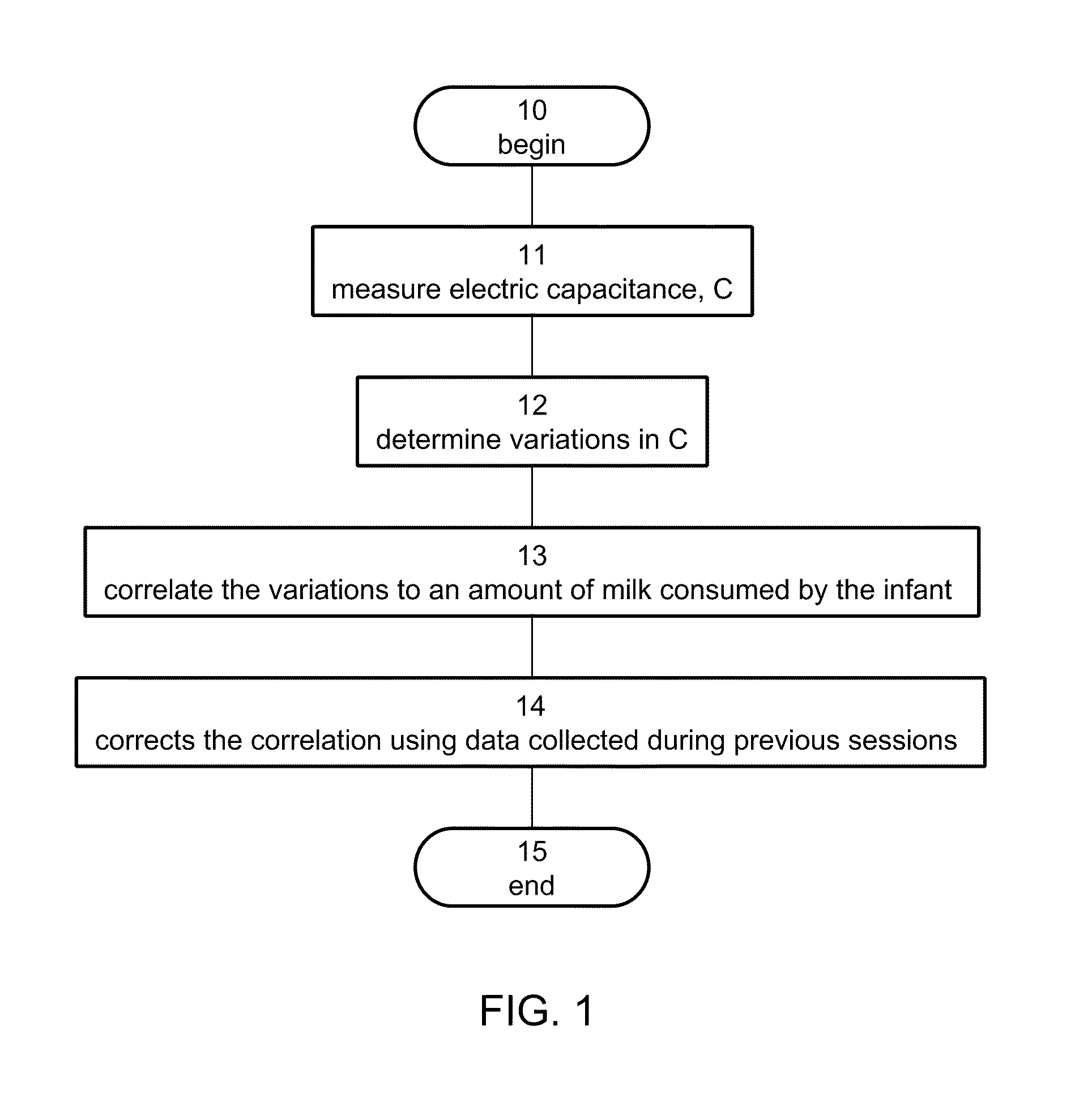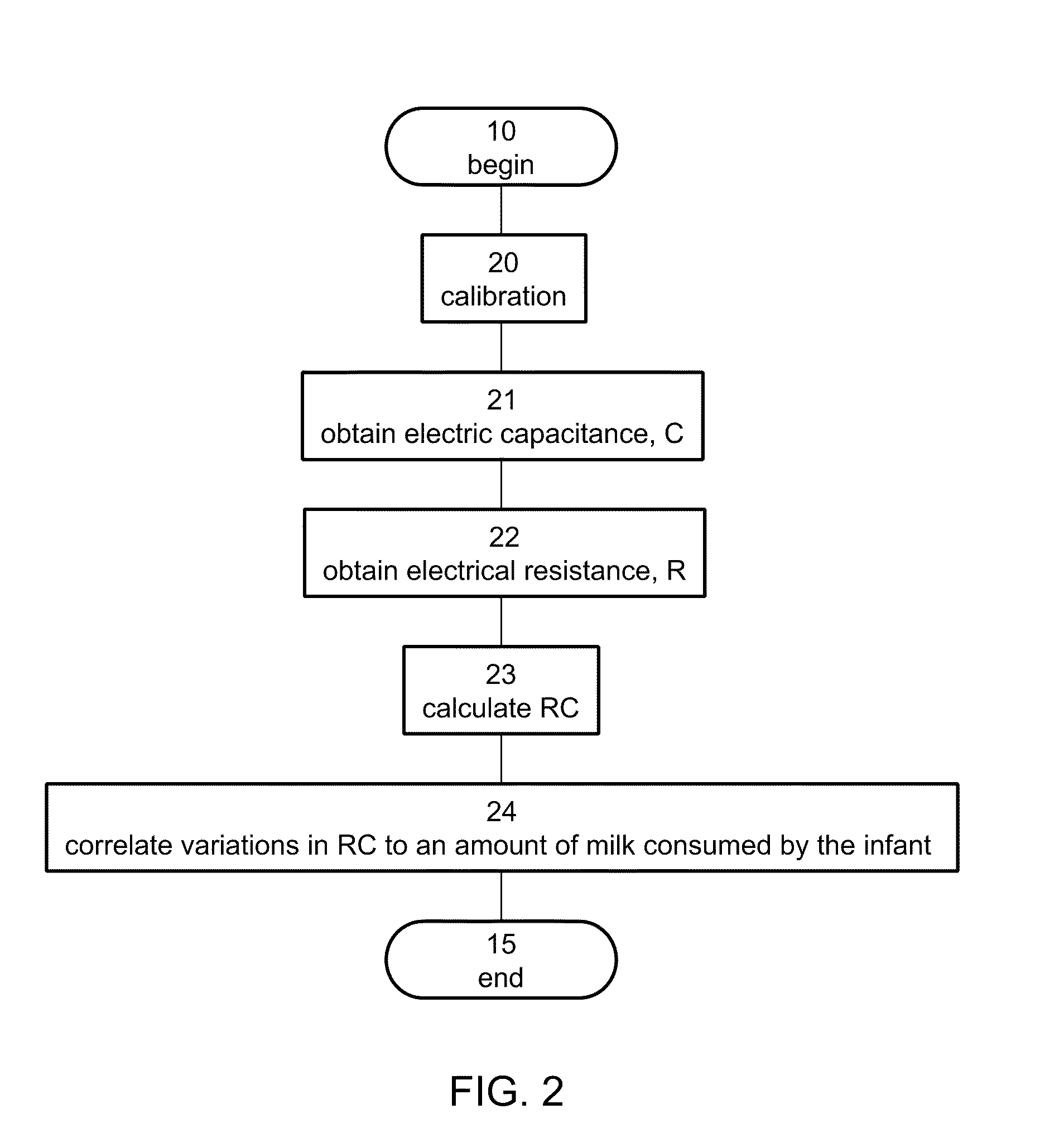Method and device for monitoring breastfeeding
a capacitance measurement and breast milk technology, applied in the field of breastfeeding, can solve the problems of insufficient breast milk consumption, increased risk of a large number of acute and chronic diseases, etc., and achieve the effect of reducing the contribution of the breast skin to the electric capacitan
- Summary
- Abstract
- Description
- Claims
- Application Information
AI Technical Summary
Benefits of technology
Problems solved by technology
Method used
Image
Examples
example 1
[0139]In this example, additional considerations with respect to the relation between the capacitance and the average volume of the alveoli are provided, without being bound to any specific theory. The following is based on a computational model, which is not intended to limit the scope of the present invention in any way.
[0140]FIG. 8 is a schematic illustration describing a simplified alveolus which collapses during expression of milk. For clarity of presentation, the alveolus is presented as an oblate that collapses along the smaller axis c.
[0141]The average cross section of one oblate in random orientation can be calculated
[0142][Vickers and Brown Proc. R. Soc. Lond. A, 457, 283] as:
σ1>=πa22+πac2sinh-1ee,
where e is the ellipticity of the oblate, defined as e=(1−c2 / a2)0.5 and a is half of the long diameter of the oblate (a>c). The right-most term of σ1 is nearly a constant equals 0.88.
[0143]The volume of the oblate is:
V1=4πa2c / 3.
[0144]When the oblate is flattene...
example 2
Breastfeeding Monitoring Using a 4-Wire Configuration
Methods
[0150]Eleven lactating mothers participated in a total of 60 milk expression sessions, in which the mothers succeeded either to pump or to feed their baby with amount of more than 45 ml milk. The amount of milk was measured in the case of pumping according to the level of milk indicated in the bottle during several breaks of about ½ minute in the milk expression, and in the case of baby feeding according to the weight of the baby before and after eating. The accuracy of the former is 5 ml and of the latter is 10 ml. The density of pumped milk was tested regularly and can be assumed 1 gr / ml (with up to 7% error).
[0151]A 4-wire AC impedance method was used for monitoring. Four pediatric ECG electrodes (ConMed Huggables 1620-003) were placed in one line on the upper part of the breast at a constant location for each subject (±1 cm), 6-7 cm above the nipple. The inner voltage electrodes were separated by 65 mm and the outer cur...
example 3
Breastfeeding Monitoring Using a Non-Contacting Configuration
[0162]The amount of milk consumed by a baby during breastfeeding was monitored by measuring the capacitance between two electrodes placed on the breast but not in electrical contact with them during breastfeeding session.
[0163]FIG. 18 and FIG. 19 show raw data of the capacitance signal in pF as a function of the time in arbitrary unit during one breastfeeding session. A continuous change in the capacitance was observed during the entire session. The observed change in capacitance is interpreted as a proxy to the amount of milk consumed by the baby during breastfeeding.
[0164]The amount of consumed milk can be correlated to the following normalized change in capacitance:
ΔC=C1-C2C1,
where C1 is the capacitance before feeding and C2 is the capacitance after feeding.
PUM
 Login to View More
Login to View More Abstract
Description
Claims
Application Information
 Login to View More
Login to View More - R&D
- Intellectual Property
- Life Sciences
- Materials
- Tech Scout
- Unparalleled Data Quality
- Higher Quality Content
- 60% Fewer Hallucinations
Browse by: Latest US Patents, China's latest patents, Technical Efficacy Thesaurus, Application Domain, Technology Topic, Popular Technical Reports.
© 2025 PatSnap. All rights reserved.Legal|Privacy policy|Modern Slavery Act Transparency Statement|Sitemap|About US| Contact US: help@patsnap.com



